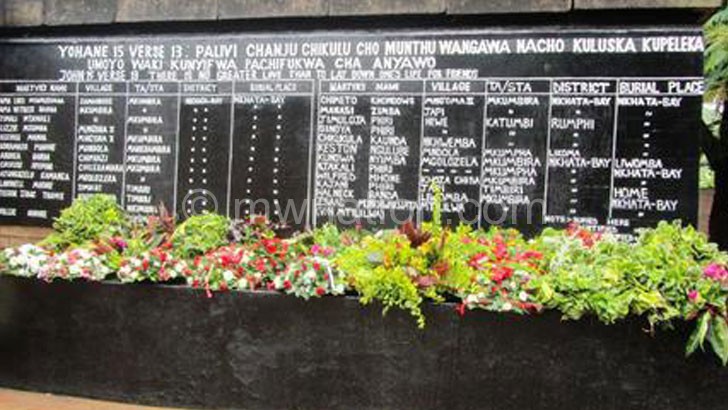What’s behind the wild GDP projections?
Hon Folks, as the nation waits with bated breath for Goodall Gondwe’s 2018/19 pro-youth budget, I can’t help wondering what the projected economic growth rate would be like in the year of elections.
The many promises of zitukuko (development projects) in the year of elections presuppose the economy will generate enough wealth from which government will squeeze enough revenue. Yet, the trend since APM assumed power in 2014 puts to question the credibility of government’s economic growth projections.
Gross domestic product (GDP) growth rate was projected at 6 percent in the 2014/15 fiscal year and the economy actually grew by 5.7 per cent. In subsequent years, the difference between the growth forecast and actual growth rate was like day and night.
Take 2015/16 fiscal year, GDP was projected to grow by 7 percent yet its actual growth was by a meagre 2.8 percent. The following year, the projected grow rate was at 6.1 per cent but the economy actually grew by 2.5 percent.
In 2017/18, government initially estimated the economy to grow by between 6 and 7 percent. By mid-year, the projections were revised to 4 percent and, going by trend, the actual growth rate is likely to be much less.
Is there a lack of skills in government to make credible economic projections or someone does the paint-brushing of a hopeless situation for sheer political expediency? It’s not as if there’s no precedent to the art of doctoring figures.
When the zero-deficit budget exploded in Bingu’s hands, the Executive sold the Legislature cooked-up figures meant to portray a embellished picture that all was well when the economy had actually derailed.
But now there’s no escaping the reality that the economy has capsized in troubled waters as attested to by fact that the national budget is shrinking both in nominal and real terms against the ever-rising demand for more public good and services.
In 2016/17, government came up with a K1.2 trillion zero-aid budget but could not raise the required revenue. Likewise, in 2017/18, the budget was initially at K1.313 trillion but a mid-year reality check forced a recast of the spending blueprint to K1.2 trillion.
Sadly, MRA—government’s instrument for collecting tax revenue which constitutes more than 80 percent of the domestic revenue—continues to collect below target. It’s also common knowledge that non-tax revenue hardly meets, let alone surpass, target despite the apparent charging of commercial rates for most of the goods and services government renders to individual citizens.
So what will be contained in the pro-youth budget and where will the funding come from? More katapila (debts)? Already at over K1.1 trillion, domestic debts are at 25 percent of the GDP, way above the recommended 20 percent limit.
External debts are at K1.4 trillion, resulting in a total debt, GDP ratio of over 50 percent. Government may wear a brave face and argue that there’s still room for more borrowing on the foreign market but that will result in diverting more from the public kitty towards debt servicing at the expense social spending. Consequently, poverty is likely to get worse as quality of education for our children and health care for the majority of our people continue to decline.
All along government has tackled the challenge of budget deficit by trying to broaden the revenue base while reducing allocations to various budget lines. Nobody can fault efforts meant to enhance efficiency in revenue collection only that it’s madness to try to fill a leaking bucket. Government should first tackle corruption which erodes up to 30 percent of what goes in the public coffers.
There’s also need for a business unusual approach to addressing wasteful spending. Why reduce further funding to Anti Corruption Bureau (ACB), Ombudsman, Malawi Human Rights Commission (MHRC) and other governance watchdogs only to provide for the business class comfort to a principle secretary on a more than three –hour flight?
Why allocate 800 litres a month to a Cabinet minister who resides in Area 10 and work at Capital Hill, a five minute drive away, when a police patrol vehicle or a hospital ambulance is hardly allocated 20 litres a day?
Why should the elite bask in opulence when the task-payer is deprived of basic public services?




